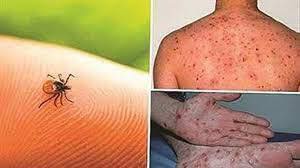It is a viral fever that is usually transmitted from infected animals to humans through contaminated blood or meat, and due to the absence of supervision and weak health precautions and preventive controls in the work of butcheries, and the slaughter of sick animals without examination and control.
Although the virus dies if infected meat contaminated with the virus is well cooked, it may even be transmitted through the blood of infected animals. Experts warn that the virus may also be transmitted from one person to another, especially through sexual contact or saliva and various body fluids. Early symptoms of viral hemorrhagic fever include a range of mild to relatively severe illnesses such as fever, fatigue, weakness or general malaise, dizziness, muscle, bone or joint pain, nausea, vomiting, and diarrhea. As for the symptoms of the disease that may become life-threatening, they include bleeding under the skin or in the internal organs or from the mouth, eyes, or ears, and dysfunction in the nervous system, with coma, delirium, and sometimes renal, respiratory, and hepatic failure.
When traveling to an area where certain hemorrhagic fevers are common, you may become infected without showing symptoms until after a while, and it may take from two to 21 days for symptoms to appear, depending on the type of virus.
In the latest statistics revealed by the Iraqi Ministry of Health on June 4, 2023, hemorrhagic fever infections in the country amounted to 139 since the beginning of this year, including 20 deaths, including two deaths in the Kurdistan region and two deaths in Erbil, while the Kirkuk governorate recorded one death. Although there is no specific treatment for most types of hemorrhagic fevers, drugs (Rebetol and Virazole) may help. Dengue fever, Ebola fever, Marburg fever, yellow fever, and Lassa fever are types of hemorrhagic fevers.
There are several ways of transmission of viral hemorrhagic fevers:
✓ From one person to another through direct contact with patients who show symptoms, and direct contact with patient’s body fluids or their dead bodies, or with infected animals.
✓ Inadequate infection control in hospitals such as (Crimean-Congo hemorrhagic fever, Lassa fever, Ebola fever).
✓ Slaughter practices and consumption of raw meat from infected animals or unpasteurized milk such as (Chemian-Congo hemorrhagic fever, Rift Valley fever).
✓ Direct contact with rodents or inhalation or contact with materials contaminated with rodent droppings (Lassa fever).
✓ Mosquito bites (such as Rift Valley Fever, Dengue Fever) or ticks (Chemian-Congo Haemorrhagic Fever)








